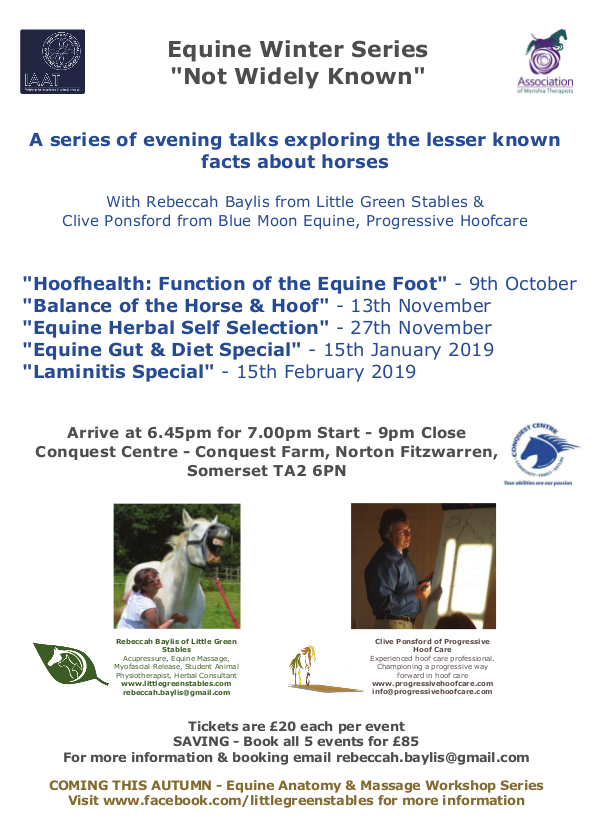Balance of Horse and Hoof
Thank you to all of you who turned up on Tuesday night for the second in our winter series of talks, it was good to see you all.
We covered quite a bit of ground so here is a brief reminder of all the main points.
We started with a quote from sir Isaac Newton “if I have seen further than others it is because I have stood on the shoulders of giants” I wanted to use this to highlight that only when we look at many different theories, many different viewpoints about our horses do we really begin to see further, to know more. In other words, to know about the equine foot, you need to know about the whole horse.
I spent some time on flat footed horses. I talked about how I see flat footed horses as having a deteriorating foot, progressively getting worse. That we, horse owners, are probably responsible for this as horses are not born flat footed. I talked about how we can improve a flat foot, get it to perform better. How this takes time and so we need to focus on the horse as a whole.
There are probably quite a few roads to flat footedness, diet, gut health, exercise, environment, hoof care. All these elements will play a part, but hoof care may well have a central role as we don’t lose pedal bone angle overnight. Your hoof care professional should spot it early and try and prevent the foot from deteriorating.
We also looked at how the angle of the pedal bone can change. How the foot can change shape and how these changes could well be labeled as adaptive. We know the foot is made up of intelligent tissue which responds to stimulus. If this stimulus is not correct, we get an incorrect foot. This can then become a cycle; the incorrect foot gives incorrect stimulus and on we go. Breaking this cycle, looking for the reason why the foot is changing, not just trying to cut the foot to what we think is correct, is the only way forward.
We know that heel pain is the driver behind many foot problems and we looked at how heel pain can be the catalyst for conditions such as navicular syndrome, shoulder pain, back pain. How simple heel pain in one front foot can cause a severe balance problem in the hind feet. We talked about how we should not accept incorrect feet but always try to strive for as healthy a foot as possible.
I enjoyed the questions afterwards, and really hope that everyone who attended the talk enjoyed it and found it thought provoking. I hope that you all went away and tried the dangle test to see where your frogs are pointing and just where the front of your horses’ foot is.
Hope to see you all at the next talk.
